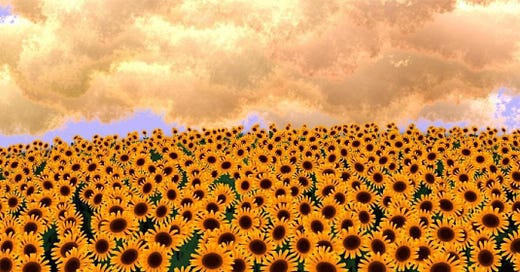Hello, hello!
We went from January 57th to February 13th in just 2 seconds. Time is an illusion? I don’t know. That’s a longer conversation.
Well, well, I am back to Bangalore and recovering well.
Last month, I was diagnosed with dengue (again) and it made me realise that the mosquitoes want to be in relationship with me — against my will.
The amount of medicines and IVs have made me sour, and cannula’s mark is still sore. I have cut my hair shorter to feel better (read younger).
It’s no joke that even last time I got dengue three months before Orenda’s book launch. This is not the kind of shagun I want for my paper baby releases. Now, hoping for the best.
We are in the last leg of publishing Tadow, with five endorsements, yay! Will be starting the pre-launch efforts soon, and they will consume me, I know.
The cover design is almost done and I will be submitting the manuscript in the next couple of hours. Wish me luck! :)
Here’s a sneak peak:
Back Blurb:
Tadow weaves together 67 flash fiction stories that capture the mercurial pulse of modern India, flowing from its bustling streets to its quietest corners. Each tale is a dance of serendipity and substance, offering raw, intimate glimpses into the intricate contours of humanity.
Through trials, joys, and revelations, this collection delves into the heart of what it means to live, love, and persevere. With unparalleled depth and tenderness, Author Shalaka Kulkarni’s luminous prose invites you to reimagine the resilience of the human spirit.
Open its pages. Witness lives unfold. Embrace wonder.
Here’s to living in sentences — yours, mine, ours.
Mathemartics
If the universe speaks in equations, then art is how we listen.
Mathematics has always been the silent architect of the world we see, but it takes a certain kind of mind to make it visible, tangible; almost breathing.
Hamid Naderi Yeganeh is one such mind, a mathematical artist who transforms cold, precise equations into mesmerizing visual poetry. The internet is going ga-ga about his work.
Yeganeh’s work thrives at the intersection of logic and wonder. He uses trigonometric functions, parametric equations, and fractals to generate intricate, lifelike forms —each crafted entirely from mathematical rules. Here’s my favourite:
Where traditional artists wield brushes and chisels, Yeganeh’s toolkit consists of mathematical functions and algorithms. He manipulates sine waves, cosine curves, and complex numbers with a precision that only a computer can execute, yet the final output feels organic — like nature itself had whispered its secrets to the screen.
His most renowned works stem from:
Trigonometric Equations – Functions like sin(x) and cos(y) guide the structure of his creatures and landscapes.
Fractals – Infinitely complex patterns that echo nature’s self-replicating forms, from snowflakes to neural networks.
Computational Geometry – Using algorithms to create structures that are both chaotic and symmetrical.
What if existence itself could be reduced to a formula?
Some might say it already has been coded into the Fibonacci sequence of petals, the golden ratio of a nautilus shell, the chaotic yet structured dance of waves and weather.
My favorite is how music is math in motion: harmonic frequencies, perfect ratios, and Fibonacci echoes hidden in every melody.
Mathematics and life share an uncanny resemblance: both appear chaotic at first glance, yet follow deeper laws of symmetry and pattern. :)
Inkspirations this month:
An Excel sheet poem by Isabella Correa
First woman to visit every country in the world - Crazy good!
The Sounds of Earth ft. Padma Bhushan Kesarbai Kerkar
Keeping it raw -
Until the thirteenth,
Writeously yours,
Shalaka Kulkarni





